Moss.
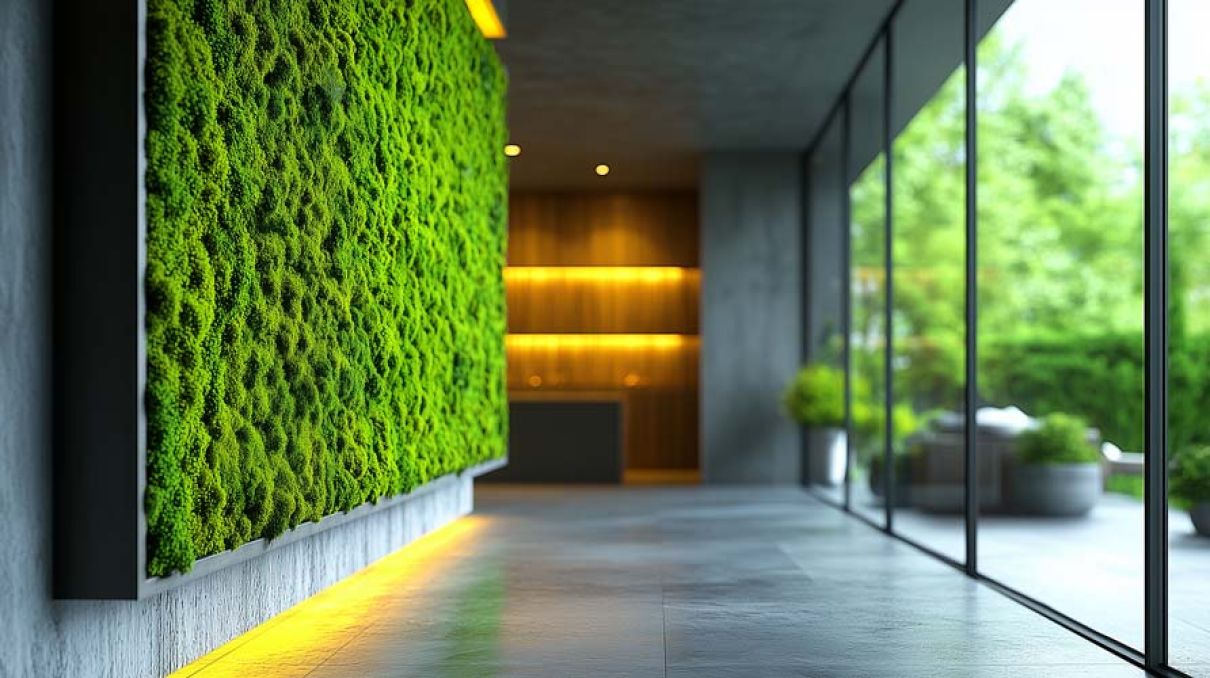
The project presented here was developed with the support of the nobilé Foundation as part of the Ludwig-Maximilians-Universität Förderpreis. More greenery indoors is a growing trend; it not only increases the feel-good factor and concentration, but also has much more potential. To achieve this, however, it is necessary that the plants, in our case the mosses, are not preserved. Preserved mosses can be found in many indoor green spaces, but this green appearance can often be deceptive. Because without the ability to photosynthesize, the supposedly green wall has hardly any advantages. A living green wall, on the other hand, is full of life, which benefits us indoors. Moisturized and therefore living mosses are able to actively bind and metabolize fine dust [1]. They contribute to optimum air humidity, can absorb noise thanks to their large surface area [2] and impress with their naturalness.
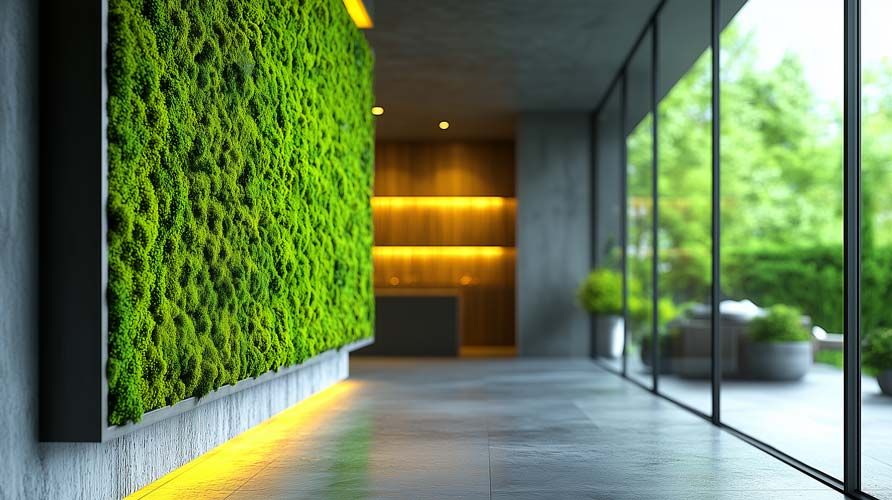
However, the use of mosses outdoors is also interesting and can even contribute to the insulation of buildings [3, 4]. The Ludwig-Maximilians-Universität Förderpreis project measured the effect of planted (moss, sedum) vs. painted (black, green) modules on the temperature of the house wall and achieved astonishing results. The planted modules showed an insulating effect on the temperature on the house wall with lower temperatures on average in the hot summer months and warmer temperatures in the cold winter months, as well as lower temperature fluctuations during the course of the day for the planted modules (Fig. 4, as yet unpublished).
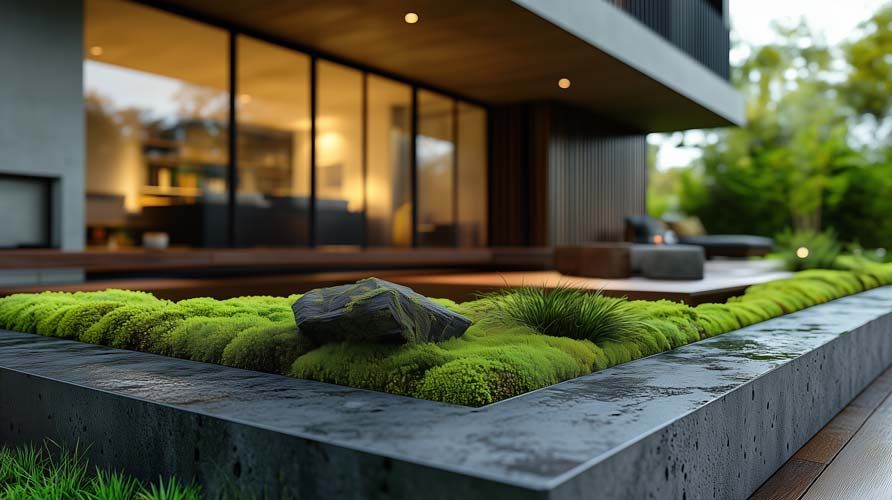
Mosses are particularly suitable as they require little care and water, are extremely resistant to stresses such as drought [5] and temperature [6], and also fulfill optimal conditions for indoor and outdoor installation due to their low weight.
Our fully automatically illuminated and watered systems for indoor use are presented below.
Moss
The mosses (Racomitrium canescens) grow on a water-storing fleece, which is sewn with a mesh to fix the mosses to the substrate.
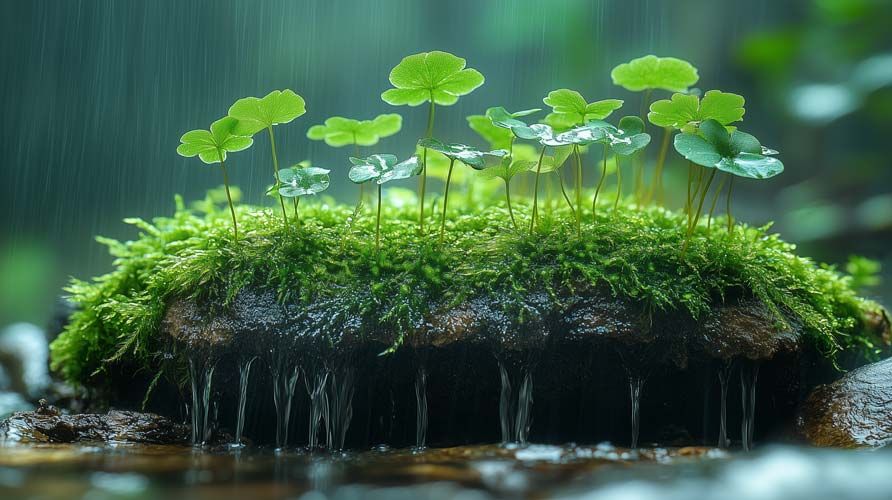
Light
In both cases, light is provided by LEDs from nobilé, including so-called BIO-LEDs, which are very similar to natural sunlight and are therefore perfectly adequate for the survival of the mosses.

Water
In both cases, watering is carried out with a sprinkler system. The system in Fig. 1 is watered from the sides with two foggers, others are watered from above with two spray foggers.
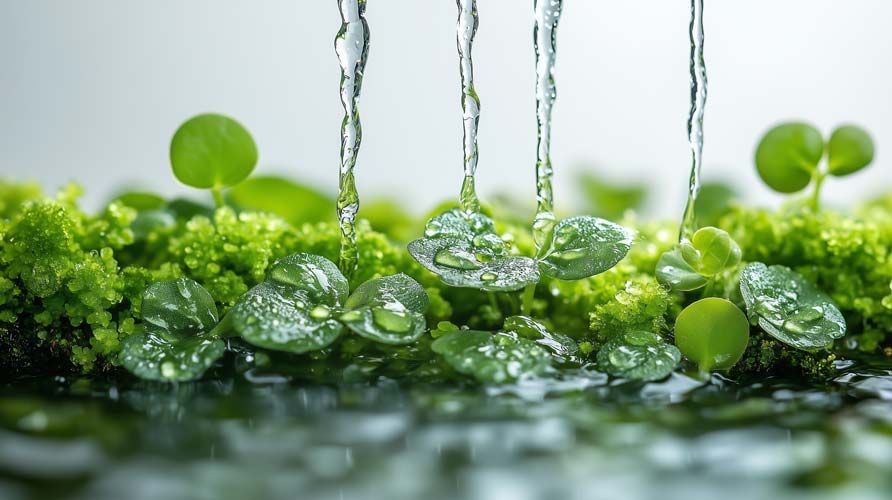
Pedestal
The pedestal on which the moss module stands initially served as a water reservoir for the spray nebulizers and was subsequently replaced by a narrow water tank on the rear wall of the moss picture. This makes the moss module a compact and independent system. Hoses lead upwards behind the module to the nozzles. A diaphragm pump pumps the water at 300 ml/min and a pressure of 6 bar. Irrigation and lighting are automatically controlled by timers.
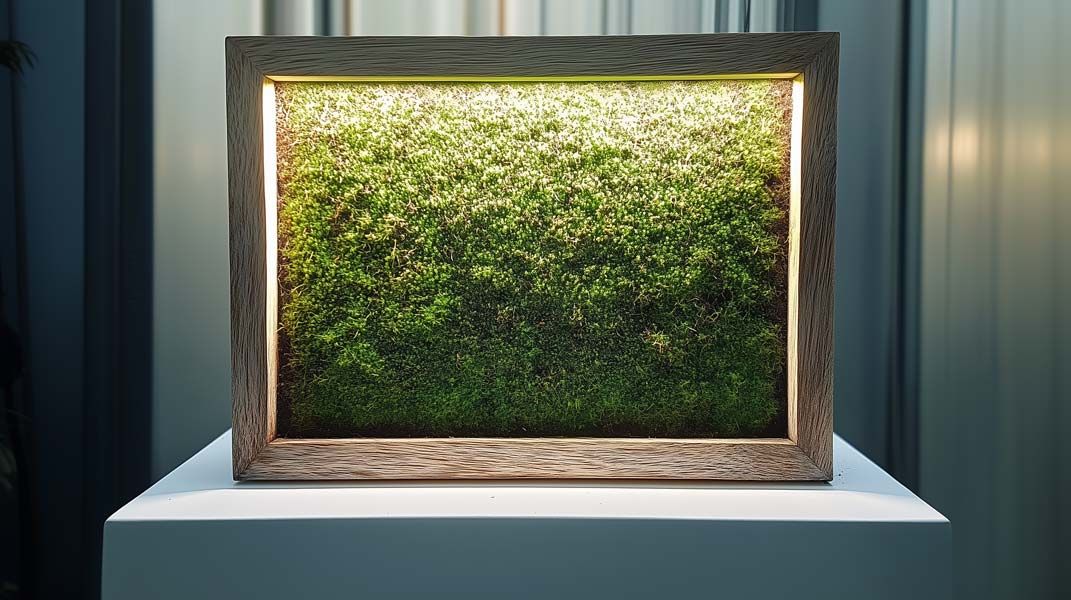
Fig. 1: BIO-LED strip frame, spray from the side
This sketch shows how the moss module is planted in a perforated board to give the moss support. The moss module sits on a substrate that feeds the moss. Irrigation takes place via a water basin with an ultrasonic nebulizer.
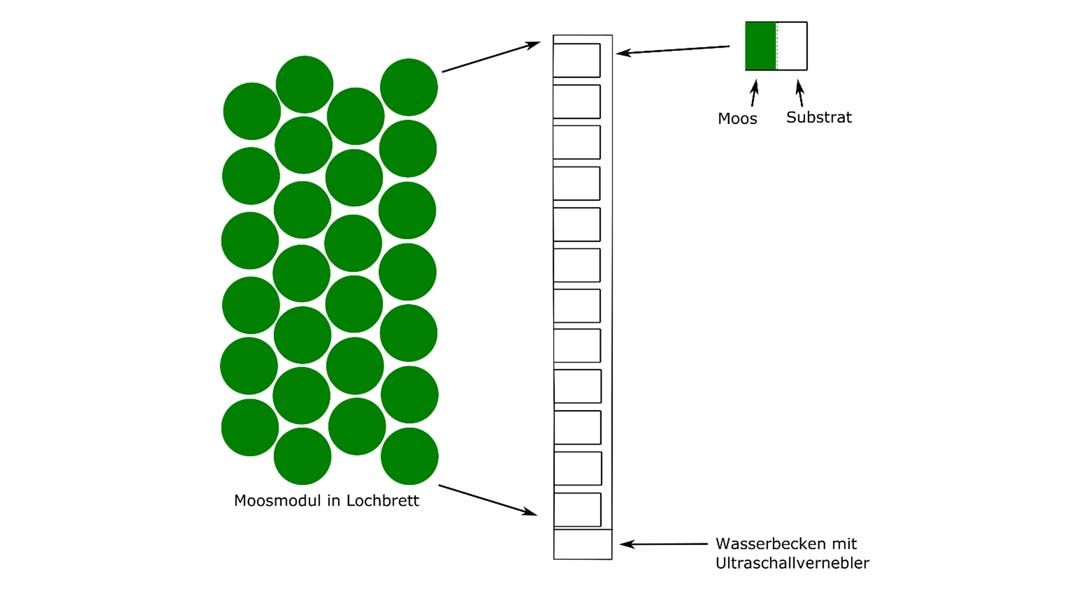
Fig. 2 Project design for modular system with irrigation by ultrasonic nebulizer
Temperature graphs
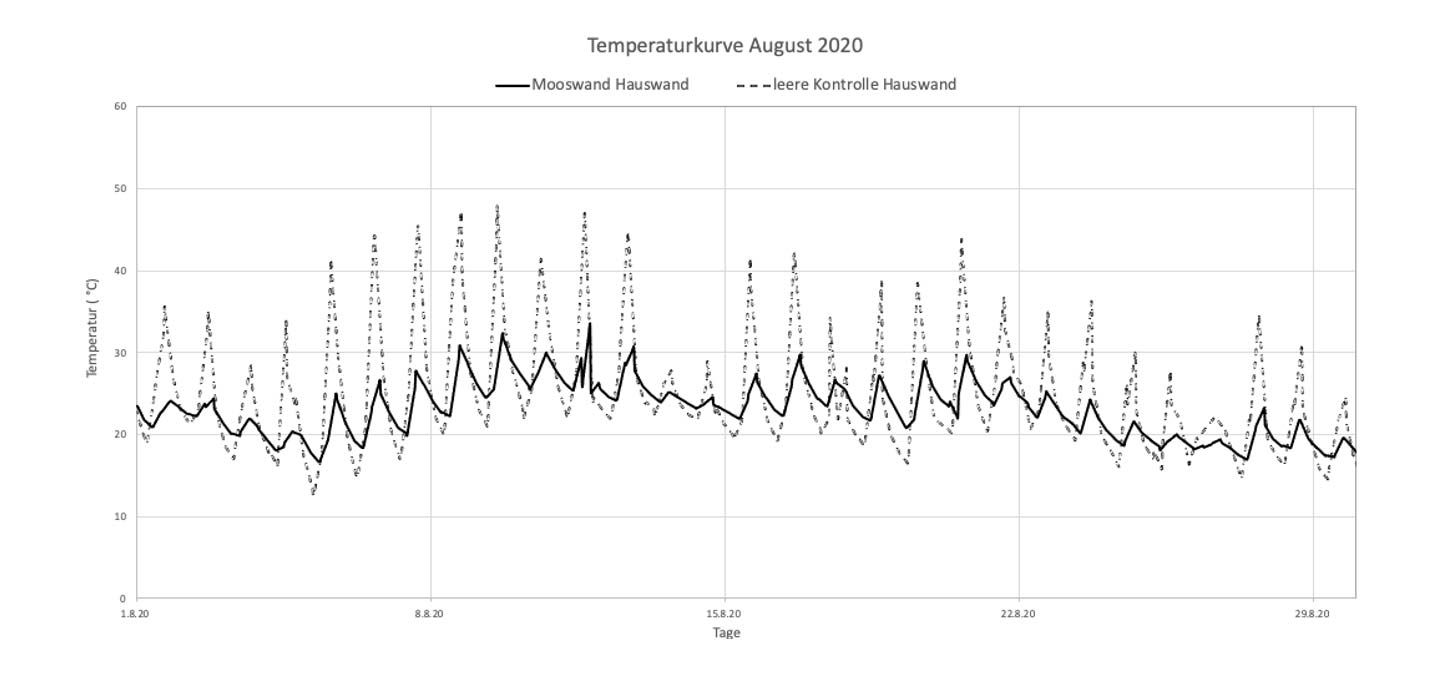
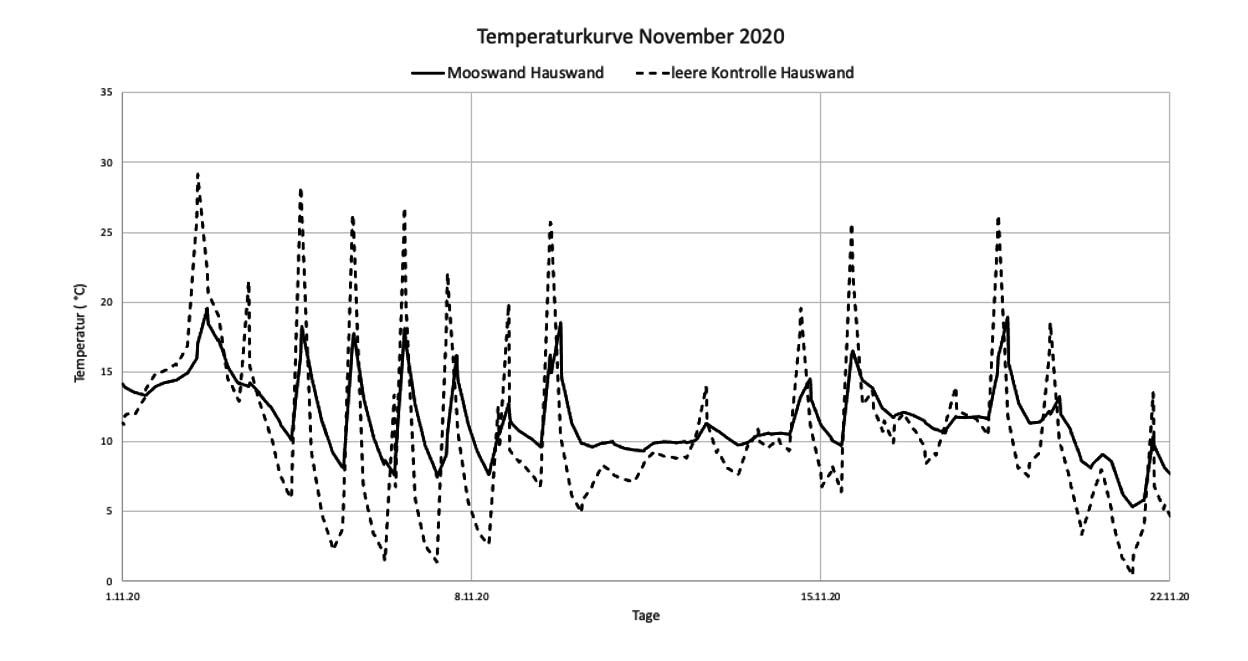
Fig. 3 Interpolated temperature curves of the moss module vs. empty house wall over the months of August and November in comparison. As yet unpublished data from Lisa Wolf, LMU funding award project “Green exterior walls”.
List of sources:
[1] Harmens H, Foan L, Simon V, Mills G.
Terrestrial mosses as biomonitors of atmospheric POPs pollution: A review. Environ Pollut 2013;173:245–54.
https://doi.org/10.1016/j.envpol.2012.10.005.
[2] Van Renterghem T, Hornikx M, Forssen J, Botteldooren D.
The potential of building envelope greening to achieve quietness. Build Environ 2013;61:34–44.
https://doi.org/10.1016/j.buildenv.2012.12.001.
[3]Wong I, Baldwin AN.
Investigating the potential of applying vertical green walls to high-rise residential buildings
for energy-saving in sub-tropical region. Build Environ 2016;97:34–9.
https://doi.org/10.1016/j.buildenv.2015.11.028.
[4] Manso M, Teotónio I, Silva CM, Cruz CO.
Green roof and green wall benefits and costs: A review of the quantitative evidence. Renew Sustain Energy Rev 2021;135:110111.
https://doi.org/10.1016/j.rser.2020.110111.
[5] Proctor MCF.
The bryophyte paradox: tolerance of desiccation, evasion of drought. Plant Ecol 2000;151:41–9.
https://doi.org/10.1023/A:1026517920852.
[6] Chasov AV, Minibaeva FV.
Photosynthetic Apparatus of Hylocomium Brilliant Moss Resistant to Extreme Low Temperatures. Russ J Ecol 2023;54:500–8.
https://doi.org/10.1134/S1067413623060036.